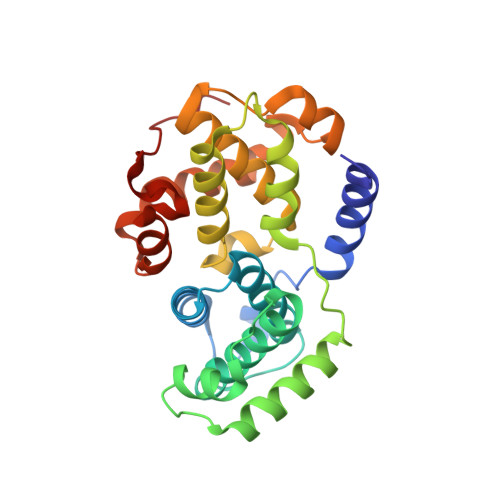How Tyrosine 15 Phosphorylation Inhibits the Activity of Cyclin-Dependent Kinase 2-Cyclin A.
Welburn, J.P.I., Tucker, J., Johnson, T., Lindert, L., Morgan, M., Willis, A., Noble, M.E.M., Endicott, J.A.(2007) J Biol Chem 282: 3173
- PubMed: 17095507
- DOI: https://doi.org/10.1074/jbc.M609151200
- Primary Citation of Related Structures:
2CJM - PubMed Abstract:
Inhibition of cyclin-dependent kinase 1 (CDK1) activity by Tyr-15 phosphorylation directly regulates entry into mitosis and is an important element in the control of the unperturbed cell cycle. Active site phosphorylation of other members of the CDK family that regulate cell cycle progression instates checkpoints that are fundamental to eukaryotic cell cycle regulation. Kinetic and crystallographic analyses of CDK2-cyclin A complexes reveal that this inhibitory mechanism operates through steric blockade of peptide substrate binding and through the creation of an environment that favors a non-productive conformation of the terminal group of ATP. By contrast, tyrosine phosphorylation of CDK2 alters neither its Km for ATP nor its significant intrinsic ATPase activity. Tyr-15-phosphorylated CDK2 retains trace protein phosphorylation activity that should be considered in quantitative and qualitative cell cycle models.
Organizational Affiliation:
AstraZeneca Pharmaceuticals, Alderley Park, Macclesfield, Cheshire SK10 4TF, United Kingdom.



















